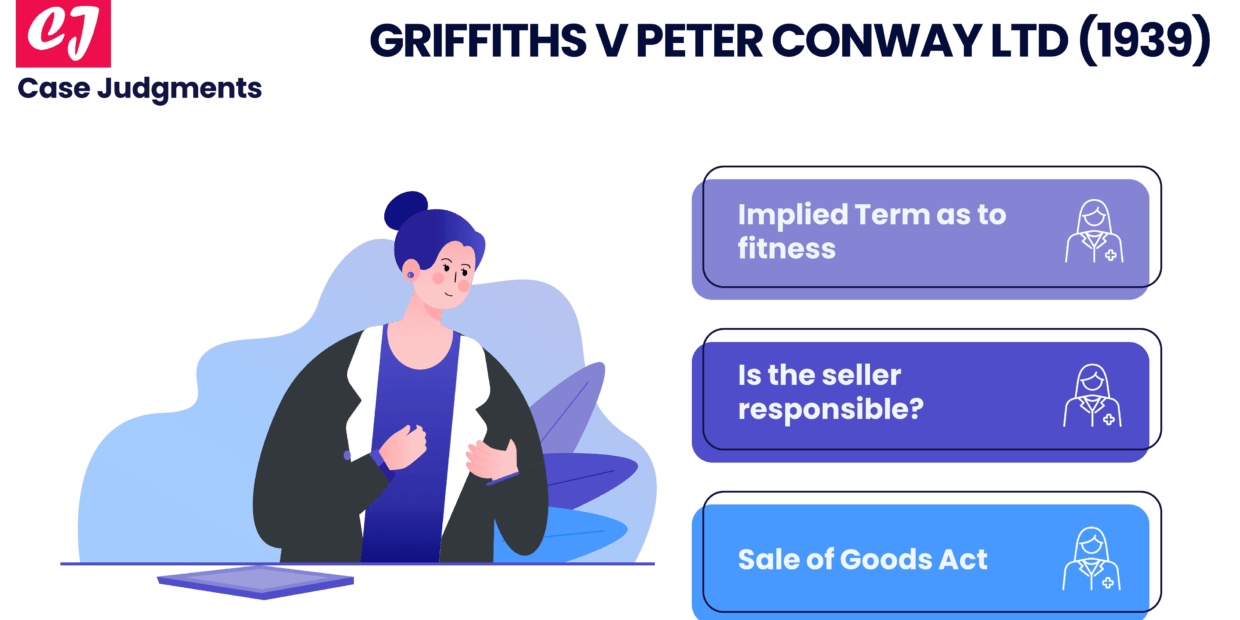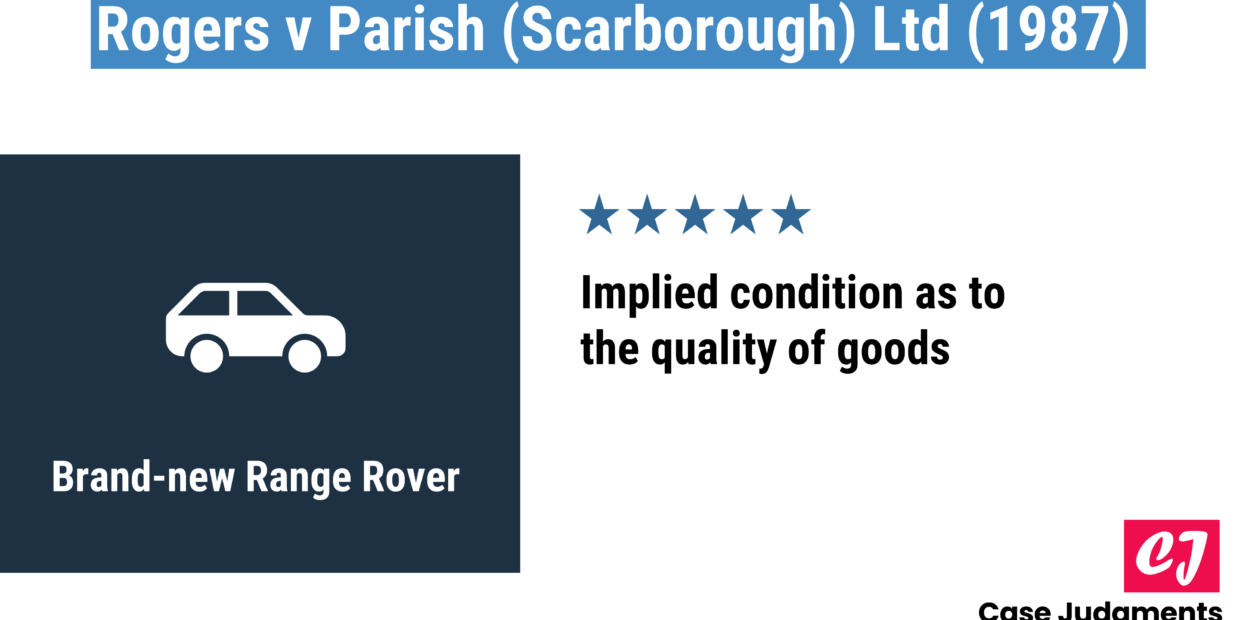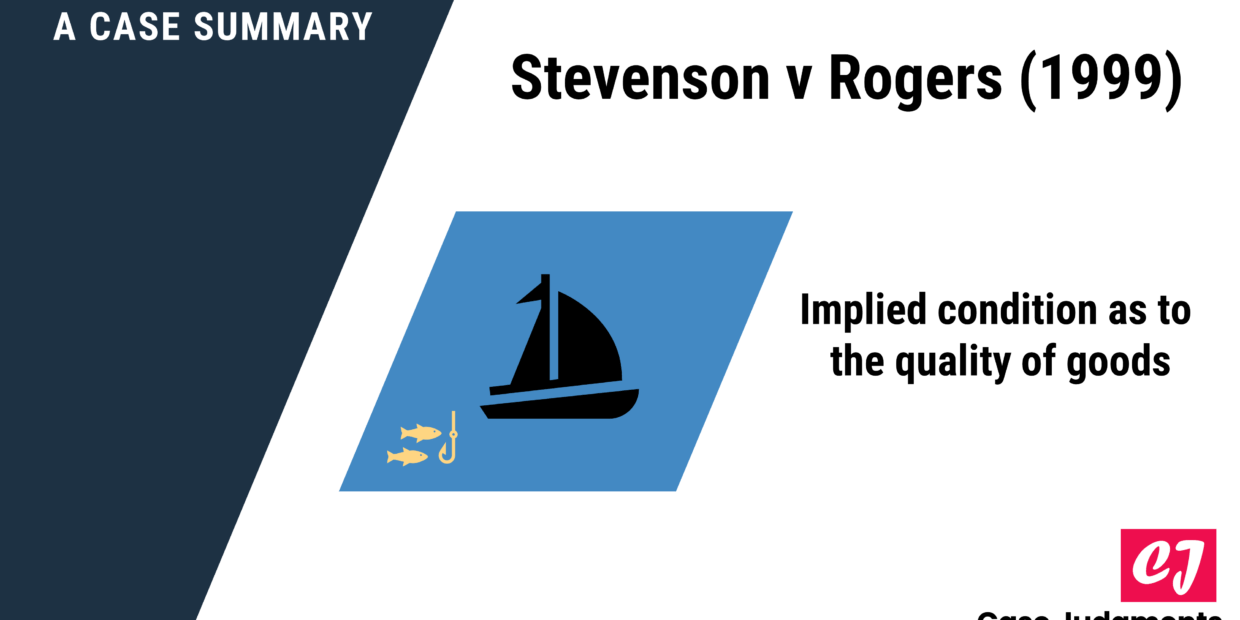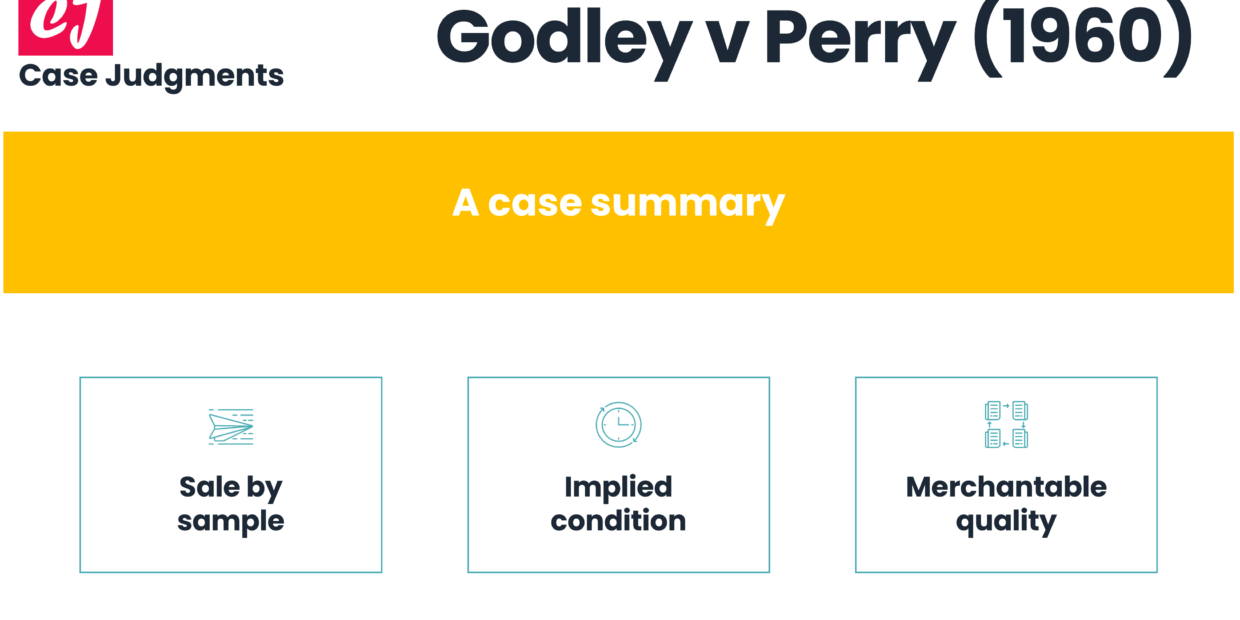Case name & citation: Griffiths v Peter Conway Ltd [1939] 1 All ER 685 Jurisdiction: England, UK Year of the case: 1939 Area of law:…
Case name & citation: Rogers v Parish (Scarborough) Ltd [1987] QB 933 Court and jurisdiction: Court of Appeal, England and Wales Decided on: 05 November…
Case name & citation: Stevenson v Rogers (1999) 1 All ER 613 Court and jurisdiction: Court of Appeal, England and Wales Year of the case:…
Case name & citation: Harlingdon and Leinster Enterprises Ltd v Christopher Hull Fine Art Ltd [1990] 1 All ER 737; [1991] 1 QB 564 Court…
Case name & citation: Re Moore & Co and Landauer & Co [1921] 2 KB 519 Court and jurisdiction: Court of Appeal, England and Wales…
Case name & citation: Priest v Last [1903] 2 K.B. 148 Court and jurisdiction: The Court of Appeal, England & Wales Year of the case:…
Case name & citation: Godley v Perry [1960] 1 WLR 9; [1960] 1 All ER 36 (Q.B.D.) Court and jurisdiction: Queen’s Bench Division, England and…






